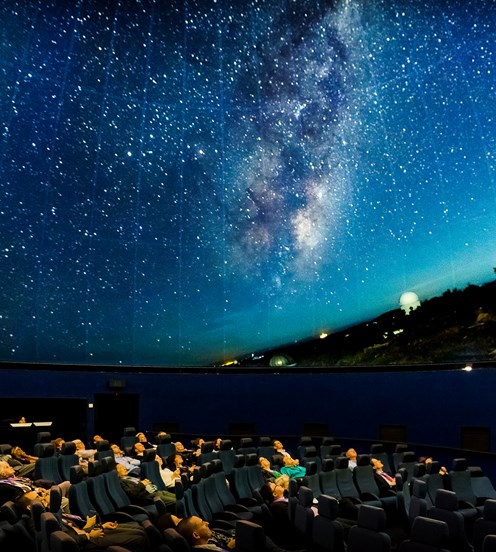
Melbourne Planetarium
Shows run every day exploring space, astronomy and the night sky, all in high-resolution full dome format

Shows run every day exploring space, astronomy and the night sky, all in high-resolution full dome format
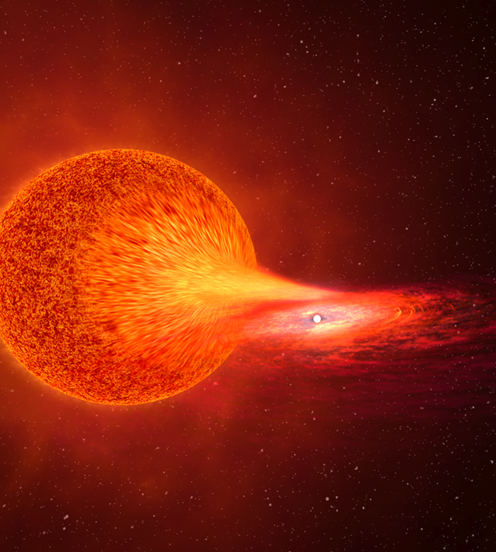
From Friday 12 February
Enjoy science and art in the unique 360 degree full-dome format.
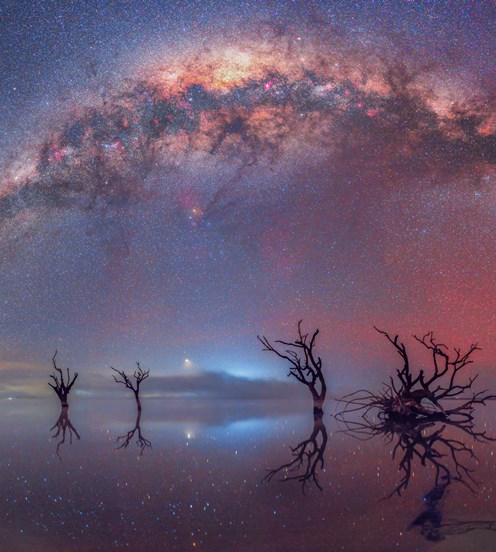
A gallery of glorious space photos, judged by renowned astrophotographer Dr David Malin, is open to enjoy at Scienceworks until 18th April.
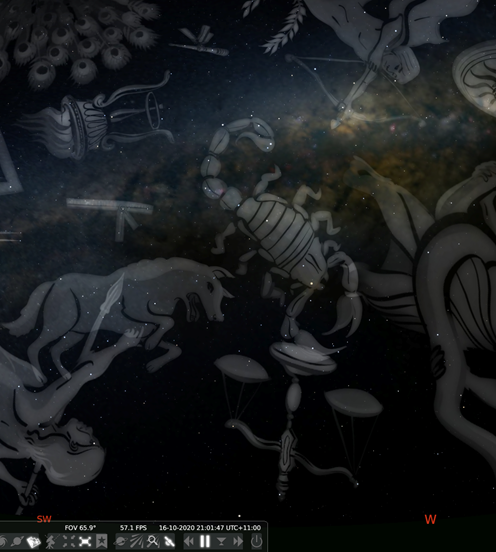
Keen and curious young minds can log on and discover the night sky in our February webinars.
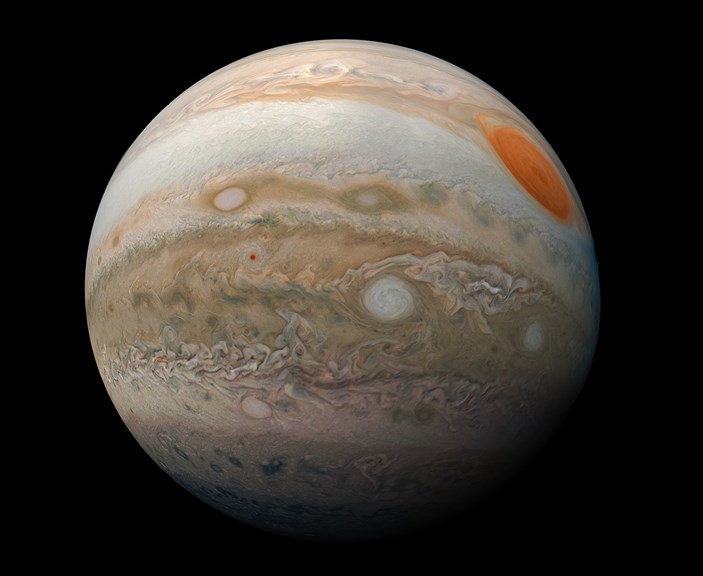
The remarkable Juno mission that launched in 2011 with arrival in 2016, has been extended to 2025 to further study Jupiter and its environs. With 42 additional elliptical orbits that will speed the craft in and over the north pole, the site of numerous large cyclones, Juno will make close flybys of three inner moons (Ganymede, Europa, and Io), and study its faint rings. The most dangerous encounters in Jupiter’s hostile environment are yet to occur but the spacecraft has survived well so far. Apart from images made from JunoCam, a camera not originally planned but wisely added to the spacecraft, Juno has already inferred details of the planet’s interior, examined its turbulent atmosphere, and studied its magnetosphere, aurora and powerful magnetic field.
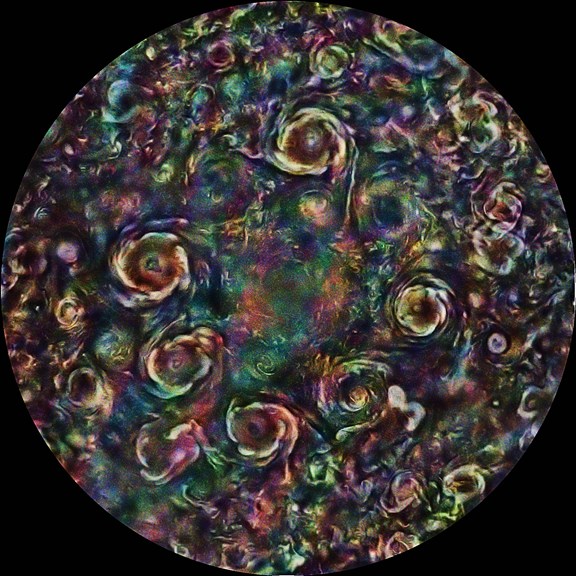
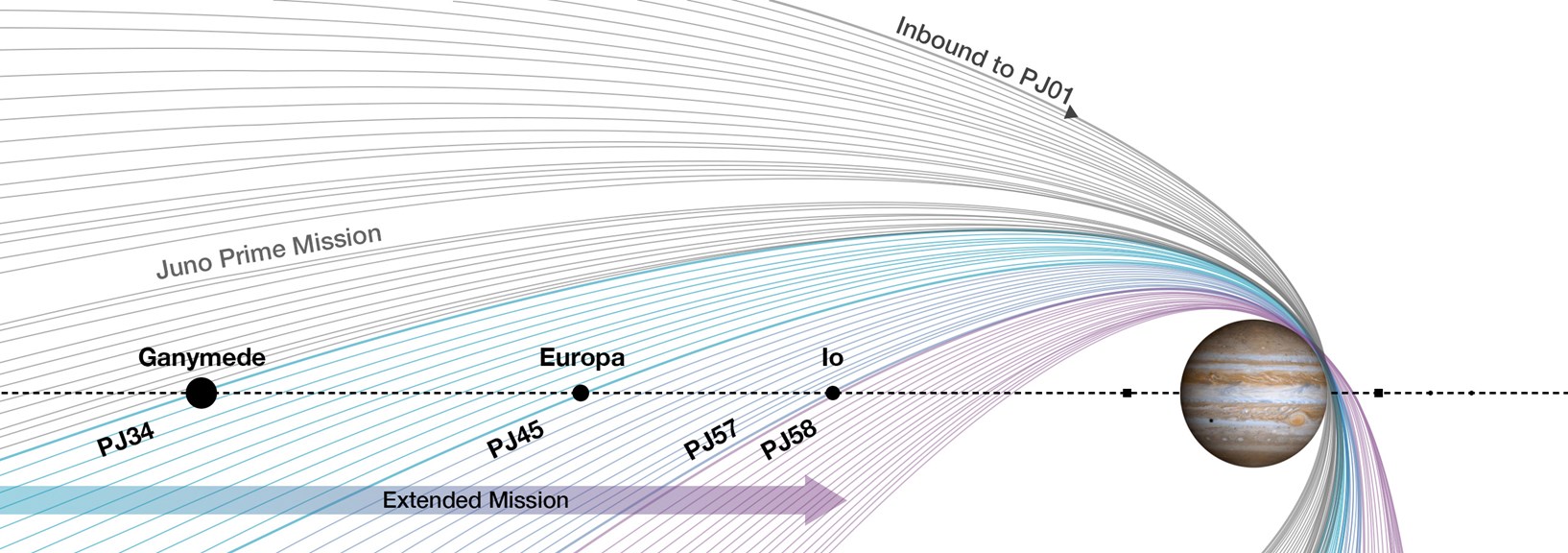
Water was not thought to be abundant after the Galileo spacecraft’s entry probe of 1995. Juno has revealed it is in fact widespread, just not in the northern equatorial band the probe entered. Water is not, however, uniform across Jupiter which is quite different to the Earth’s well-mixed atmosphere.
A massive cyclone exists at each of Jupiter’s poles. The southern one is surrounded by six smaller cyclones, while in the north the surrounding number is eight. Why they are there, how the central cyclones and their smaller satellites form, and why there are so many is not yet known.
Great Red Spot, the famous and long-lasting swirling storm, has been found to originate some 320km below the cloud tops. Looking into its heart you are gazing deep into the planet’s atmosphere.
Giant auroras in the form of enormous circular crowns lie around the planet’s polar latitudes. Juno has recorded extremely high-voltages associated with them; 400,000 electron volts which is 10 to 30 times more powerful than for Earth’s northern and southern lights. Jupiter’s auroras result from the acceleration of charged particles but how is not understood, although its intense radiation belts and strong magnetic field are part of the story.
A powerful magnetic field has been confirmed at Jupiter that is 10 times more intense that Earth’s. The spatial distribution is immense but not straightforward. It is complex with north and south poles, hot spots, and an extra pole in the equatorial region.
Lightning in Jupiter’s cloud bands extend deep into its atmosphere. ‘Shallow lightning’ has been observed associated with ammonia-water hailstones (dubbed mushballs). If the explanation proves correct it will be a major difference to how Earth lightning is generated which involves water only.
Jupiter’s Rings have been imaged directly by Juno’s star reference camera. The extended mission is expected to reveal more detail of the brighter main ring and fainter halo and gossamer rings. Just like at Saturn with its rings, moons and moonlets, Jupiter’s thin broad ring system is somehow associated with the small moons Thebe, Amalthea, Andrastea and Metis.
Sprites or Elves – and finally, Juno has seen in Jupiter’s atmosphere incredibly brief but very bright ultraviolet flashes. These sudden localised discharges have a central focus with radiating tendrils that quickly spread out before fading. It’s the first time such transient luminous events (TLAs) have been recorded beyond Earth. Here their colour is typically red due to atmospheric nitrogen, but on Jupiter with abundant hydrogen they are expected to be blue or pink.
More at: Mission Juno and NASA Juno
| Rise | Set | Day length | Solar noon § | |
|---|---|---|---|---|
| Mon 1st | 6:33 | 8:33 | 13:59hrs | 1:33 |
| Thu 11th | 6:45 | 8:23 | 13:38hrs | 1:34 |
| Sun 21st | 6:55 | 8:10 | 13:14hrs | 1:33 |
| Sun 28th | 7:03 | 8:01 | 12:58hrs | 1:32 |
§ When the sun is at its highest, crossing the meridian or local longitude.
| Phase | Date |
|---|---|
| Third Quarter | Friday 5th |
| New Moon | Friday 12th |
| First Quarter | Saturday 20th |
| Full Moon | Saturday 27th |
This month’s Moon perigee (closest to Earth) is on Thursday 4th at 370,116 km and apogee (furthest from Earth) is on Thursday 18th at 404,467 km.
Mercury is not visible this month being too close to the sun.
Venus is now lost in morning light. After its passage behind the sun, it will return in June in the north-west after sunset as the ‘Evening Star’.
Mars continues to be easily seen in the north-west from 9pm, and will set by around midnight.
Jupiter is now briefly visible in the east in the early morning light rising around 5:30am before fading by sunrise.
Saturn is not yet visible but will return in March when it will rise after Jupiter in the east.
The alpha-centaurids and beta-centaurids are active from 2nd to 25th peaking on the 8th. They are different but it is difficult to distinguish between them. Occurring near the Two Pointers, they are not strong showers but often have fireballs and persistent trails. 25 per hour can occur but 6 per hour has been more usual.
Orion, the hunter, is high in the north but seen in the southern hemisphere upside down. The famous three stars of his belt and scabbard (containing the beautiful Orion Nebula) also form the asterism The Saucepan. Above is the blue-white supergiant star Rigel as one of his feet, and diagonally below is the red supergiant Betelgeuse marking one of his shoulders. To the north-west is the inverted ‘V’ of stars that form the head of Taurus, the bull with the red giant star Aldebaran as its lower right corner. Below and to the left is the close grouping of blue giant stars that formed together and are still bound together gravitationally, the beautiful Pleiades star cluster or “Seven Sisters” (M45 from Charles Messier’s catalogue). They do happen to represent in many cultures a woman or group of women.
High in the east is Sirius, the brightest star at night and the principal star in Canis Major (Greater Dog, one of Orion’s two hunting dogs, the other being Canis Minor which is smaller and low in the east). For the Boorong of north-west Victoria it marks Warepil the wedge-tailed eagle, one of the most important figures in aboriginal stories and sky lore. Around the world most night sky observing cultures have recognised this special star and accorded it major significance. Sirius is 8.6 light years away, over 25 times as luminous as the sun, with a name derived from the Greek seirios meaning (appropriately) glowing or scorching.
The Southern Cross and the Two Pointers (Alpha & Beta Centauri) are low in the south. The two small nearby galaxies, the Magellanic Clouds, named in honour of 16th century explorer Ferdinand Magellan who embarked on the first circumnavigation of the globe, are high in the south-west looking like fuzzy patches but best seen away from city lights. They are visible all year round, unlike in most of the northern hemisphere from where they cannot be seen. The earliest records of them are in petroglyphs and rock art in South America, and ancient aboriginal stories here in Australia.
The Milky Way’s broad band of billions of distant stars arcs across the sky from south through the east and to the north. At its southern end lie dark dust clouds that block light from distant regions of the galaxy. In our First Peoples’ night sky they join to form a giant emu, although only half is visible above the horizon at this time of the year.
Explore Australia’s First Peoples’ astronomy at: aboriginalastronomy.com.au
ISS orbits every 90 minutes at an average distance of 400 km. It appears like a bright star moving slowly across the night sky.
For Melbourne and Central Victoria there will be several times this month, especially Friday 12th to Sunday 14th, when ISS will pass overhead in the early morning and later in the evening on the same day.
| Friday 12th | 5:45am-5:52am | West-South-West to North-East |
| Saturday 13th | 4:59am-5:04am | South-West to North-East |
| Saturday 13th | 9:39pm-9:45pm | North-North-West to East-South-East |
| Sunday 14th | 4:59am-5:04am | South-West to North-East |
For ISS passes and satellites in orbit go to: heavens-above.com
1st, 2003, the Space Shuttle Columbia (USA) disintegrated on re-entry killing all seven astronauts and halting the shuttle program for over two years.
1st 1970, US astronomer Vera Rubin finds evidence of ‘dark matter’ by studying motion of stars and galaxy rotation not consistent with Newton’s laws.
3rd, 1996, Luna 9 (USSR) made first soft-landing on moon and sent first panoramic images from the Ocean of Storms.
4th, 1976, Lunar Orbiter 3 (USA) launches to the moon to select Apollo landing sites.
5th, 1963, Dutch astronomer Maarten Schmidt discovers quasars (quasi-stellar radio sources).
7th, 1979, Pluto moves inside Neptune’s orbit for the first time since its 1930 discovery.
8th, 1969, the Allende meteorite, the largest carbonaceous meteorite found, lands near the village of Allende, Mexico.
9th, 1986, first module of Mir space station (USSR) is launched into Earth orbit.
9th, 1986, last visit of Comet Halley met by flotilla of probes (notably ESA’s Giotto) with comet’s next return due mid-2061.
9th, 1473, birth of Nicholas Copernicus, famous for his sun-centred theory in On the Revolutions of the Celestial Spheres (1543) which triggered the Copernican Revolution.
9th, 1975, Soyuz 17 (USSR) returns to earth setting Soviet record of 29 days in space.
11th, 2003, first measurements using WMAP (Wilkinson Microwave Anisotropy Probe) data to reveal relic Big Bang temperature as a variation across the universe.
12th, 1947, 100 tonne iron meteorite falls in Sikhote Alin, southeast Russia. Largest in recorded history, brighter than the sun, with deafening sound and a smoke trail lasting several hours.
12th, 1961, Venera 1 probe (USSR) launched to Venus by Soviet Union.
12th, 2001, NEAR Shoemaker (USA) is first probe to land on an asteroid - 433 Eros.
13th, 2004, discovery of ‘largest diamond’, white star BPM 37093, is announced.
14th, 1990, Voyager 1 (USA) takes famous ‘pale blue dot’ picture of Earth as it looks back while speeding out of solar system.
15th, 1564, birth of astronomer, physicist and engineer Galileo Galilei in Pisa, Italy. Supported heliocentric solar system, and studied motion, telescopes, moons of Jupiter, rings of Saturn, phases of Venus, Sun spots, and features of the moon.
15th, 2013, 20 meter Chelyabinsk meteor explodes 30km over Southern Urals, Russia, travelling at 60,000kph with shock wave damaging buildings and causing many injuries due to flying glass.
16th, 1771, Charles Messier’s catalogue of 100 deep space objects.
17th, 1965, Ranger 8 (USA) probe launched to image the moon in aid of Apollo landings.
18th, 1930, Clyde Tombaugh (USA) discovers Pluto using a blink comparator in a systematic search for the supposed ‘Planet X’ beyond Neptune.
20th, 1962, first American astronaut into orbit, John Glenn, in Mercury Friendship 7 in three orbits lasting almost 5 hours.
22nd, 1632, Galileo publishes Dialogue Concerning the Two Chief World Systems which compared solar system models and led to conflict with and censure by the Catholic Church.
23rd, 1987, SN1987A, closest and brightest supernova since 1054 observed in Large Magellanic Cloud 168,000 light years away. Visible to naked eye for months.
24th, 1968, post-graduate student Jocelyn Bell (Northern Ireland) discovers first pulsars.
26th, 1966, first Saturn 1B rocket launch, which led to Saturn V Apollo missions.
27th, 1942, JS Hey (UK) discovered radio emissions coming from the Sun.
28th, 1997, first evidence for gamma ray bursts (GRB) as extra-galactic energy sources.
Museums Victoria acknowledges the Wurundjeri Woi Wurrung and Boon Wurrung Bunurong peoples of the eastern Kulin Nations where we work, and First Peoples across Victoria and Australia.
First Peoples are advised that this site may contain voices, images, and names of people now passed and content of cultural significance.